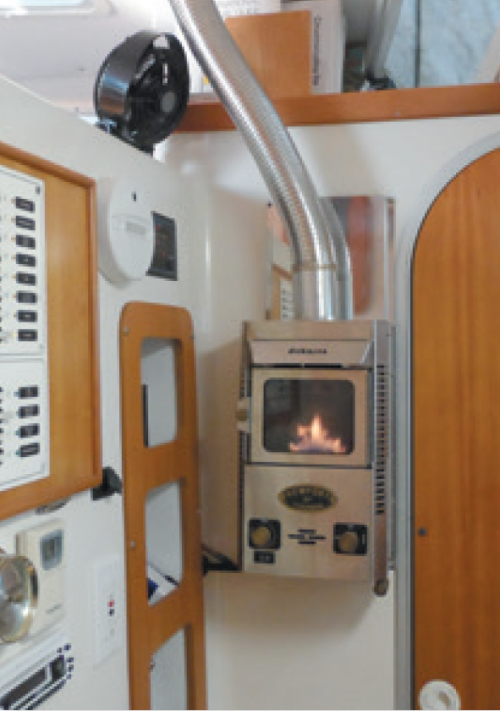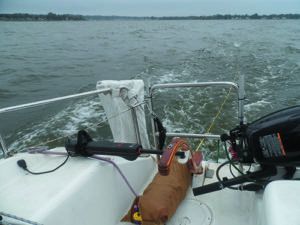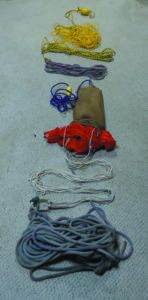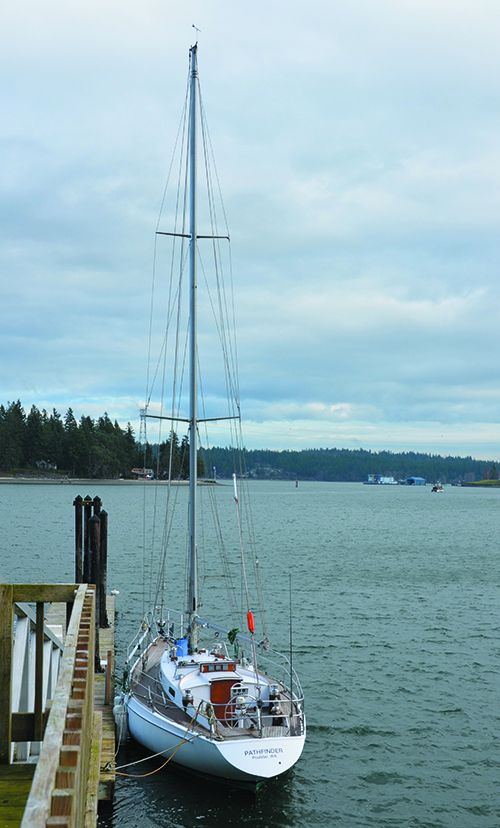Check Your Policy
Regarding your recent blog post, “Boat Insurance Shopping Tips,” be sure to read the policy. I discovered, that a change in underwriting at Boat U.S. insurance meant that I had virtually no hull or damage insurance—despite increasing premiums. That is because, independent of any agreed on value, the maximum the policy would pay for any damage was reduced by 10 percent for every year past 20 years of age, to a minimum of 20 percent. As the owner of a classic 47-year-old Sparkman and Stephens sailboat, this appeared to mean I was only covered for a maximum of 20 percent of the cost of any repairs. So I asked the question. If I lose the mast, or get T-boned by another boat while sitting peacefully at anchor, the policy pays only 20 percent of the actual cost of repairs, less deductible? I had to come up with very specific scenarios, lay them out clearly, and the phone representative had to have a lengthy consult with a supervisor before I could get a definitive answer. They confirmed that for an older boat that is damaged but not a total loss, my coverage would be a maximum of 20 percent of the cost of repair, less my deductible. “Agreed on value” only factored in if the boat was a total loss. I found a much more comprehensive and less expensive marine policy through the company that provides my homeowner’s and business insurance. Better than offered by any of the brokers I contacted.
Ron Russell
Pathfinder, 39-foot
Sparkman & Stephens
Kenmore, WA
Routine Surveys
Several years ago my beloved sailboat was involved in a collision and appraised by the adjustor as a total loss. The boat had many upgrades including a new diesel two years prior. I had the boat surveyed a year before the accident. The insurance company paid me full appraised value—less a few minor hits—due to the surveyor’s recent appraised value and good record keeping.
Jim Mumper
Via PS Online
Drag-free Anchoring
Regarding your recent blog post “Ground Tackle Inspection Tips,” we have anchored Pleiades, our 1990 Catalina 34 Mk II an average of 25 times per season for the past seven sailing seasons. We use: (1) a 25-pound Mantus anchor; (2) 50 feet of 5/16-inch high strength galvanized chain; (3) 180 feet of 5/8-inch diameter nylon three-strand rode; (4) a rope-to-chain splice with 8 tucks and seized with marline; (5) no swivel, and (6) 9-inch long bow cleats mounted on the gunwale (standard on a Catalina) so there is zero chafe. Pleiades does not have a windlass, so weighing anchor depends on my thighs, shoulders, forearms and hands, and perhaps with an assist from the engine. I will soon be 81. We have routinely been anchored in 20-knot winds with 1- to 2-foot seas in the anchorage, occasionally in 30-knot winds with 2- to 3-foot seas, a few times in 40 knot winds with 4- to 5-foot seas, and once in 50-knot storm with roughly six-foot seas. We have NEVER dragged anchor with this set-up, although we did do an all-night anchor watch during the aforementioned storm.
Dr. Paul F. Jacobs
Pleaides, Catalina 34 MKII
Martha’s Vineyard, MA
Ionization Versus Mold
Regarding your Inside Practical Sailor blog post “Homemade Mildew Preventers that Really Work,” here’s how serious professionals kill mold. Set up several “air purifiers” with ionization tubes. Keeping several such units running 24/7 will result in fresh clean air and no mold. This works in homes, hotels, factories, yachts, etc. Hoping that a spray or open dish will permanently kill mold spores is hope against experience. We’ve kept air purifiers running 24/7 on our boats for many years. Visitors are always impressed with how fresh the boat smells. Effects are especially dramatic on wood boats. For those with a biological bent, mold spores are very difficult to kill. An interesting experiment is running air purifiers 24/7. In bathrooms with actively used showers. Destroys mold! So keeping several sizable air purifiers running 24/7 in the bedroom and major rooms in the house can be eye-opening.
Peter Berman
Author of “Outfitting the
Cruising Sailboat”
Norwalk, CT
Company Trust
With regard to the Selfie Camera and EF 30A flare (see PS November 2019); while good to know that the manufacturers improved their products very basic performance in response to PS very important test, I would challenge the case by asking why at all trust a product from a manufacturer who obviously didn’t ran the most vigorous testing before launching (quite pricey) marine devices, especially safety related, when no second chance to test and replace is an option.
Nitzan Sneh
GDY-Kids, Contest 43
Boston, MA
Shimming Shackles
Regarding your article, “Ground Tackle Inspection Tips,” September 2018, there are many combinations that work as long as you don’t come to the situation where they don’t. I, too, have been through tests without a failure yet. I have not allowed for the off-center load on the pull possibly spreading the jaws of a shackle, and use top line Crosby shackles rated at about three times the standard strength. I get them at an industrial supply since many chandleries do not carry them. One question: To maintain a proper pull on the pin end of a shackle, will shimming it to the center with spacers/washers, be sufficient? I have centered all my shroud turnbuckles in that manner already.
Bill & Barbara Nokes
Someday, Gulfstar 41
Chetco Cove, OR
Crosby 209A shackles are our preferred galvanized shackle in the U.S., although there are several other brands that meet the same high standard established by the lifting industry. See our series of articles “Anchor Shackles, Round II” in October 2016. Correctly sized and installed (with the shackle pin linked to the rode, not the anchor) shackles should not require this treatment. Regarding the shims: one concern is that the shims would transfer loads to the body of the shackle, causing it to spread open—one of the failure modes we observed.
Calculating heat
Regarding your report, ““A Customized Way to Calculate Heating Needs” (See PS Dec. 2015), we have a heater similar to a Dickinson Newport. Dickinson makes a heat exchanger that the flue runs through. They also make a fan that attaches to the flue of the heat exchanger. It greatly increases the efficiency of the heaters. You have to maintain enough flue temperature to ensure a draft for the combustion. We put a thermostat that turns the fan on and off. The vent leads into the V-berth cabin and distributes the heat , as well as gives us a cozy, warm sleeping area . With a diesel heater it is best to have an emergency shutdown , that cuts out the fuel if the flue gets too hot . Dickinson sells one as well.
Joe Easton
Fraser 36
Vancouver, Canada

Dry Ice Versus Weevils
Regarding your November 2018 report on dealing with onboard pests, Adding stuff like diatomaceous earth complicates things when you want to use the grain. A simple trick shown me by a Mormon, who stored a survival stash of food, is to take a screw-top container, take a chunk of dry ice and put it in, and then fill up the container. Leave the screw top loose, so when the dry ice sublimates the extra can seep out. After a couple of hours tighten the top. The air will have been displaced by the CO2. When using the grain, unscrew the top, dip out the portion (not pour it out) so the CO2 stays in the container. This will kill anything living and one can store the sealed container for a year or two as long as the CO2 stays in the container.
Frank Thomas
Via PS Online
N-Connectors and Lightning Fun
Your recent report on preventing interference in VHF Antennas (see PS February 2019) recommended N-type connectors, which are hard to find in the U.S. Shakespeare offers the V-Tronix MD20N, but it appears to only be available abroad in the EU and Australia. I found this out on eBay. The UK vendor has free shipping. This antenna bears a strong physical resemblance to a GAM antenna.
After a lightning strike 30 yards off my bow, the stainless-steel whip on my Metz antenna was vaporized. Upon electron microscope inspection, we found that my superficially intact RG-8, mil-spec cable had its foam core riddled with fused globules. My boat was in its slip and had its shore power cable attached. For what it’s worth, it was not connected to shore power. Everything electrical or electronic on my boat was damaged. Most manufacturers said that they could not repair the damaged electronics. A repaired ICOM VHF handheld failed after three months. During an Annapolis summer with a record number of lightning filled storms, I once sat on my boat and watched my masthead can antenna whip vaporize explosively.
Also, it has been reported that some ships filter out the Class B signals from smaller boats when they enter congested waters, so they can focus on the vessels that could sink them. This is another good reason to maintain a visual lookout.
Ron Rogers
via PS Online
Solo Sailor Safety
PS sent an email with links to two articles related to singlehanded tragedies. The first article, “A dangerous way to learn” claims under Lessons Learned, item 2 that an auto inflating PFD provides more security. “Precious minutes passed before he was able to activate his manually inflatable PFD in the water.” The second article, “Solo Sailor Safety”, claims just the opposite. “Auto inflation is handy, but singlehanders need more control. Thankfully, there does not seem to be extensive data on this topic. Thus, each of us must make our own decisions based on our particular experience and prejudices.
Barry Needalman
Island Time, 1998 Hunter 410
Boston, MA


Singlehanders might have to swim to catch their “last-chance line,” and an auto-inflated PFD inhibits swimming (see PS January 2019). Auto-inflate would suit a singlehander who is likely to be rescued by nearby boats.
UV Filter for Clean Water
We used an ultraviolet filter on Easy Reach for about a year in 1999-2000. Because bacteria are small enough to “hide” behind an invisible bit of sediment, the system required a very fine filter before passing water by the ultraviolet radiator bulb. The filter clogged up so frequently we gave up on the system. Using increasingly fine filters was more complicated than we could manage on the Central American coast. One thing we did was use a 5-micron filter on the end of our garden hose to filter water from local municipal systems as we filled our tanks or jerry cans. We took on a lot of sediment after a heavy rain storm in Belize City, Belize.
Norris Larson
Easy Reach, Pearson 424
Evanston, IL
What About Merino Wool?
I read the article on sailing socks (see “Sailing Socks,” PS January 2019) to keep the feet warm and dry, just to see if there was anything equal to merino wool and perhaps at a lower price. As anyone who has worn a merino wool sweater or socks knows, not only does it maintain an impressive loft when wet, but they are not prone to causing itching.
Steven Gross
Spirit Quest, Tayana 37 PH
Blaine, WA
Sailing Socks Test
When wet, cotton has massive evaporative cooling, and it is far worse than wearing nothing. This is hidden from your results because the freezer bags are sealed water tight and evaporation stops when the air is saturated. In the real world, there is air exchange even under foulies as we move around, as saturated air is exchanged for drier fresh air. Wind further increases the exchange of air within the garment with the that outside the garment.
It might be a better test to have the freezer bags left unsealed, but this still wouldn’t take into effect that cotton steals our 98-degree body temperature on contact whereas the other fabrics have other mechanisms. For example, when scuba diving in a dry-suit with fleece on, the portion of fabric touching your body is dry to the touch, and the outer edge and dry suit fabric are both saturated wet with condensation and visible drops. The insulated space between the inner and outer edge minimize the heat available for evaporative cooling from your body. This is why wet wool will be far warmer than wet cotton.
Robert Sinkus
Reality, Beneteau First 325.
Vancouver, BC
The Wigwam blend socks (recommended for hiking) in our test were a 25-percent Merino wool blend. We are currently testing socks with a higher percentage of merino wool. Odor held back merino in our January 2006 base layer test.
Related posts: Resources for Boat Buyers









































